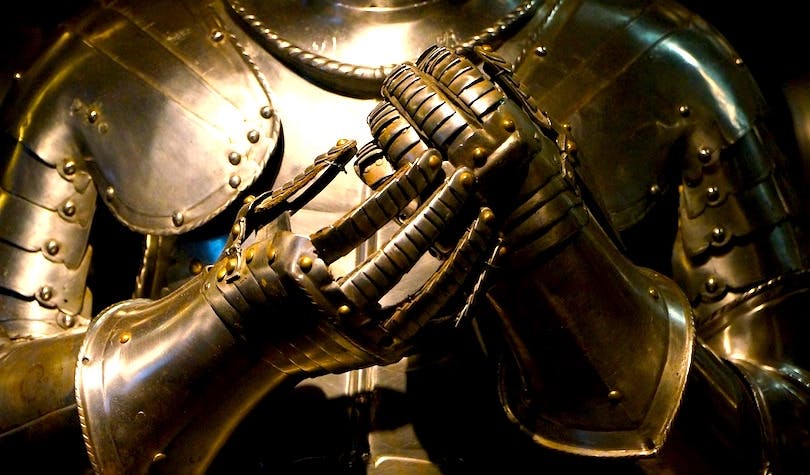Imagine what it can do for business.
Month: September 2018 – Page 3

The Graham Norton Show: Robot dances to Gangnam Style
We want one of these dancing robots… NOW! 😂.

Brain Implants Would End Most Sexual Assaults
Some of my thoughts on the Kavanaugh hearings, sexual assault, and technology: https://mavenroundtable.io/…/brain-implants-would-end-most…/ #transhumanism #MeToo
A brain implant that registers trauma could help prevent rape and violent crime — so why don’t we have it yet?

California just became the first state with an Internet of Things cybersecurity law
California Governor Jerry Brown has signed a cybersecurity law covering “smart” devices, making California the first state with such a law. The bill, SB-327, was introduced last year and passed the state senate in late August.
Starting on January 1st, 2020, any manufacturer of a device that connects “directly or indirectly” to the internet must equip it with “reasonable” security features, designed to prevent unauthorized access, modification, or information disclosure. If it can be accessed outside a local area network with a password, it needs to either come with a unique password for each device, or force users to set their own password the first time they connect. That means no more generic default credentials for a hacker to guess.
The bill has been praised as a good first step by some and criticized by others for its vagueness. Cybersecurity expert Robert Graham has been one of its harshest critics. He’s argued that it gets security issues backwards by focusing on adding “good” features instead of removing bad ones that open devices up to attacks. He praised the password requirement, but said it doesn’t cover the whole range of authentication systems that “may or may not be called passwords,” which could still let manufacturers leave the kind of security holes that allowed the devastating Mirai botnet to spread in 2016.

The end of HIV transmission in the U.S.: A once-unthinkable dream becomes an openly discussed goal
And yet, today, the struggle against HIV may be undergoing a sea change.
U.S. health officials and HIV experts are beginning to talk about a future in which transmission in the United States could be halted. And that future, they say, could come not within a generation, but in the span of just a few years.
“We have the science to solve the AIDS epidemic,” Dr. Robert Redfield, the director of the CDC, himself a longtime HIV researcher and clinician, told STAT in a recent interview. “We’ve invested in it. Let’s put it into action.‘’

There Is a Rogue Group of Stars Behaving Very Suspiciously in the Milky Way’s Disk
The Milky Way has a violent past. When it isn’t swallowing renegade sausage galaxies, it seems to be waging endless games of interstellar tug-of-war with its nearest galactic neighbors — and not always winning. According to a new study published Sept. 19 in the journal Nature, one such encounter ended with a cosmic wound to the Milky Way’s disk that still hasn’t fully healed, 300 million years later.
That wound, researchers say, is visible in a cluster of several million stars that are not behaving as they should be. While still rotating around the Milky Way’s galactic center, these rogue stars also orbit around one another in a wobbly, spiral pattern that has only become more tangled over the past eon. [Big Bang to Civilization: 10 Amazing Origin Events]
“We have observed shapes. [of star clusters] with different morphologies, such as a spiral similar to a snail’s shell,” lead study author Teresa Antoja, a researcher at the Institute of Cosmos Sciences (ICCUB) at the University of Barcelona, said in a statement. “These substructures allow us to conclude that the disk of our galaxy suffered an important gravitational disturbance.”



Molecular switches are not just ‘on’ or ‘off’
👀
The GTPases constitute a very large protein family, whose members are involved in the control of cell growth, transport of molecules, synthesis of other proteins, etc. Despite the many functions of the GTPases, they follow a common cyclic pattern (Figure 1). The activity of the GTPases is regulated by factors that control their ability to bind and hydrolyse guanosine triphosphate (GTP) to guanosine diphosphate (GDP). So far, it has been the general assumption that a GTPase is active or “on” when it is bound to GTP and inactive or “off” in complex with GDP. The GTPases are therefore sometimes referred to as molecular “switches.”
The bacterial translational elongation factor EF-Tu is a GTPase, which plays a crucial role during the synthesis of proteins in bacteria, as the factor transports the amino acids that build up a cell’s proteins to the cellular protein synthesis factory, the ribosome. Previous structural studies using X-ray crystallography have shown that EF-Tu occurs in two markedly different three-dimensional shapes depending on whether the factor is “on” (i.e. bound to GTP) or “off” (i.e. bound to GDP) (Figure 2). The binding of GTP/GDP have therefore always been thought to be decisive for the factor’s structural conformation.
However, a research collaboration between researchers from the Department of Molecular Biology and Genetics at Aarhus University and two American universities reveals that EF-Tu’s structure and function, and probably also those of other GTPases, are far more complex than previously assumed. In Søren Thirup’s group, X-ray crystallographic analysis of E. coli EF-Tu has shown that EF-Tu bound to a variant of GTP, GDPNP, can also occur in the “off” state, which is characterised by a more open structure. In collaboration with American researchers, Charlotte Knudsen’s Ph.D. student, Darius Kavaliauskas, conducted further studies using a special form of fluorescence microscopy that makes it possible to observe the spatial structure of individual EF-Tu molecules in solution.